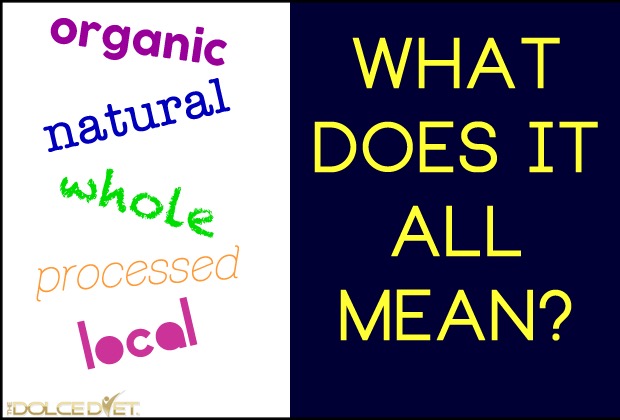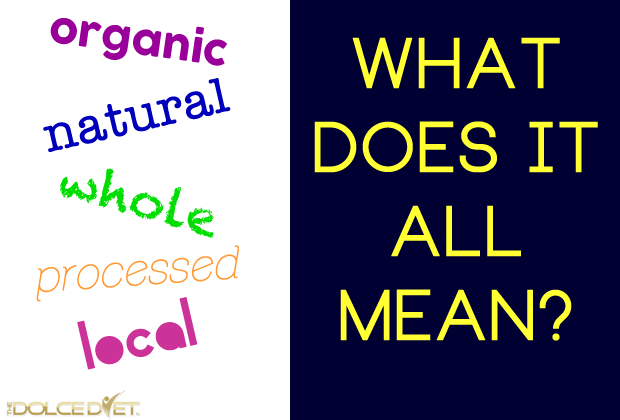
Food Marketing:
Understanding the Terminology
Samantha Wilkinson, MS, RDN, LD
Terms like “all natural” or “organic” get tossed around a lot on the packaging or signs of foods. This is referred to as “Food Marketing”, and is a way for manufacturers to boost sales by claiming that their products are as healthy as can be. There are strict, government-set criteria for certain terminology, while others are more loosely-based terms. Here we will explain some of the differences. You may find you’ve actually been using these terms incorrectly all along.
Natural
There is no official definition for the use of the term “natural.” However, the Food & Drug Administration follows a 1993 policy that states:
[FDA] has not objected to the use of the term on food labels provided it is used in a manner that is truthful and not misleading and the product does not contain added color, artificial flavors or synthetic substances. Use of the term “natural” is not permitted in a product’s ingredient list, with the exception of the phrase “natural flavorings.”
The United States Department of Agriculture allows the use of the term “natural” to be used in meat and poultry labeling on products that are minimally processed and contain no artificial ingredients or added color, and the label must state what is “natural” about the product (no artificial ingredients, etc.)
Processed vs. Unprocessed
Although the term “processed” tends to have a negative connotation since it is usually used to describe fast or pre-packaged foods, there is an actual definition for it. People just simply misuse the term. According to a 2008 federal law, “processed” refers to food that has been through a “change of character.”
Examples include:
Raw nuts (unprocessed) vs. roasted nuts (processed)
Edamame (unprocessed) vs. tofu (processed)
Head of iceberg lettuce (unprocessed) vs. cut, pre-washed iceberg lettuce (processed).
Local
This refers to purchasing food that is harvested close to where you live. This is related to environmental sustainability. But not every state has locally grown products in-state, so we must look for foods that have had the least distance traveled to get to us. For example, if you live in Nevada, you would want to choose California oranges or avocadoes over ones from Florida since it had to travel less distance to get to the local food stores.
Whole
“Whole foods” generally refer to foods that are not processed or changed in any way, and do not have any added ingredients, although there is no regulatory term for “whole.” This would include fresh produce, dairy, whole grains, meat and fish. Basically any food that appears in its most authentic form with minimal processing.
Organic
The term “organic” actually has the most detailed criteria and legality.
As defined by the USDA:
-Organic meat, poultry, eggs and dairy products come from animals that are given no antibiotics or growth hormones.
-This would include, grass-fed beef, free-range chicken and turkey, non-GMO fed chicken eggs and milk without rBST hormone (a hormone that helps cows produce more milk, usually to profit the farmer/manufacturer).
-Organic plant foods are produced without using pesticides, fertilizers or radiation.
-A government-approved certifier must inspect the farm for proper standards, which include processing and handling.
There are 3 levels of organic claims for food:
100% Organic – Fully organic or made of only organic ingredients. “100% organic” qualifies for this claim and a USDA Organic seal.
Organic – At least 95% of ingredients are organic. “Organic” qualifies for this claim and a USDA Organic seal.
Made with Organic Ingredients – At least 70% of ingredients are certified organic. Here, a USDA organic seal CANNOT be used but “made with organic ingredients” may be stated on the front label.






